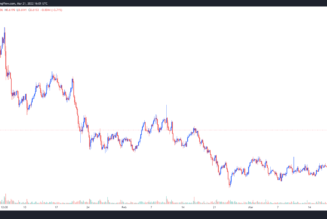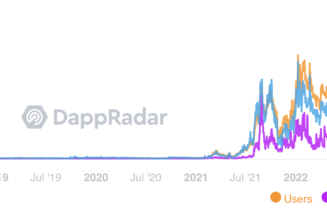
United States President Joe Biden ordered more than a dozen reports to be written when he released his Executive Order (EO) 14067 “Ensuring Responsible Development of Digital Assets.” Five had due dates within 90 days, and the last three were published simultaneously by the Treasury Department on Sept. 16. The reports were prepared in response to instructions in Sections 4, 5 and 7 of the EO.
The report ordered in EO Section 4 is titled “The Future of Money and Payments.” The report looks at the several payment systems currently in use that are operated by the Federal Reserve or the Clearing House, which is owned by a group of major banks. These will be supplemented by the non-blockchain FedNow Service instant payment system that is expected to begin operating in 2023.
Stablecoins are introduced along with FedNow under the heading of “Recent innovations in money and payments.” They are subject to a somewhat cursory discussion that examines the potential deficits of reliability and Anti-Money Laundering/Countering the Financing of Terrorism (AML/CFT) capacity, about which it concludes:
“Financial institutions that deal in stablecoins are subject to AML/CFT obligations. However, if a stablecoin was widely adopted globally as a means of payment, the stablecoin could pose greater risks for illicit finance due to uneven implementation of global AML/CFT standards for digital assets.”
The bulk of the report is dedicated to a central bank digital currency (CBDC). Although the report raises issues such as the payment of interest on a CBDC, the cost of operating a CBDC and public-private partnerships, the discussion focuses heavily on risks.
Related: White House publishes ‘first-ever’ comprehensive framework for crypto
The interaction of CBDCs and privacy protection is given subtle consideration:
“While physical cash can enable anonymous transactions, a CBDC could potentially be used at much greater scale and velocity. […] Therefore, anonymity in a CBDC system could present greatly expanded money laundering, proliferation financing, and terrorist financing risks compared to physical cash. […] A CBDC could also offer valuable new opportunities for improved supervision and AML/CFT compliance.”
The report concludes with recommendations that CBDC research be continued “in case one is determined to be in the national interest.” In addition, instant payment technology should be encouraged to improve the payment landscape. A regulatory framework should be established, and cross-border payment should be prioritized.
 [flexi-common-toolbar] [flexi-form class=”flexi_form_style” title=”Submit to Flexi” name=”my_form” ajax=”true”][flexi-form-tag type=”post_title” class=”fl-input” title=”Title” value=”” required=”true”][flexi-form-tag type=”category” title=”Select category”][flexi-form-tag type=”tag” title=”Insert tag”][flexi-form-tag type=”article” class=”fl-textarea” title=”Description” ][flexi-form-tag type=”file” title=”Select file” required=”true”][flexi-form-tag type=”submit” name=”submit” value=”Submit Now”] [/flexi-form]
[flexi-common-toolbar] [flexi-form class=”flexi_form_style” title=”Submit to Flexi” name=”my_form” ajax=”true”][flexi-form-tag type=”post_title” class=”fl-input” title=”Title” value=”” required=”true”][flexi-form-tag type=”category” title=”Select category”][flexi-form-tag type=”tag” title=”Insert tag”][flexi-form-tag type=”article” class=”fl-textarea” title=”Description” ][flexi-form-tag type=”file” title=”Select file” required=”true”][flexi-form-tag type=”submit” name=”submit” value=”Submit Now”] [/flexi-form]










Tagged: CBDC, crypto blog, Crypto news, Payments